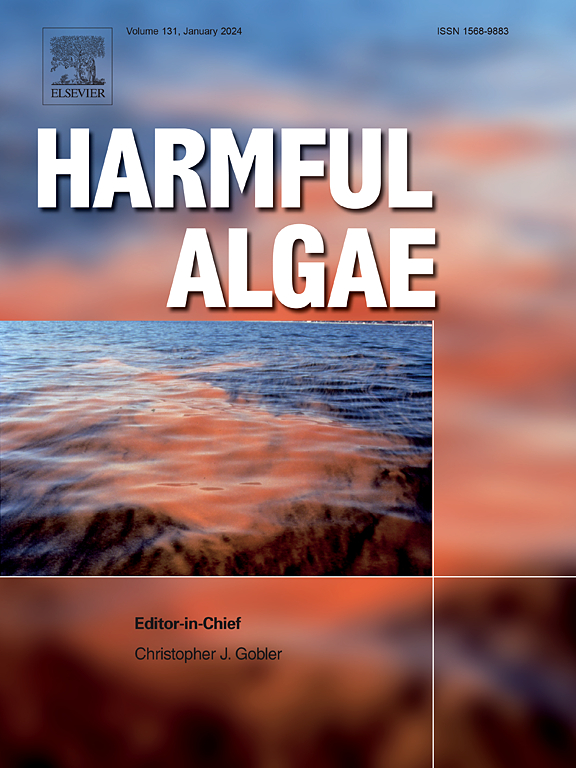Strain variability in toxin profiles and toxic potential of Dinophysis fortii populations from Southwestern and Northern Japanese coastal waters
IF 4.5
1区 生物学
Q1 MARINE & FRESHWATER BIOLOGY
引用次数: 0
Abstract
Harmful algal blooms are responsible for economic, societal, and health issues worldwide. In Japan, heterogeneity concerning diarrhetic shellfish poisoning (DSP) events has been reported, with most occurrences in the northern region. Although the toxin profile of Dinophysis cells from the DSP outbreaks has been investigated, no statistical comparison has been conducted on total toxin (particulate and released) production using cultured strains. A comparative toxin analysis was done based on > 400 strains of Dinophysis fortii from Japan's southwestern and northern areas to investigate the heterogeneity in toxicity. Regardless of the origin, the toxin profile of all strains was dominated by PTX2. However, OA was the second most abundant toxin in the southwestern and DTX1 in the northern strains. For DTX1, the average concentrations in the north (330.54 ± 223.03 ng/mL) were significantly higher than in the southwest (5.85 ± 8.92 ng/mL). PTX2 also displayed significantly higher average concentrations in the north (384.51 ± 240.03 ng/mL) than in the southwest (122.66 ± 125.1 ng/mL). However, the northern strains had significantly lower levels of OA (6.74 ng/mL ± 13.53) than those from the southwest (34.86 ± 38.47 ng/mL). The total toxin yield in the northern strain cultures was about 56 times higher for DTX1, whereas OA content was 5 times lower, indicating significant differences in toxic potential in the strains from the two regions. The results of this toxin analysis contribute to the explanation of the geographical differences in DSP outbreaks associated with the blooms of D. fortii in Japan.

日本西南和北部沿海水域富尔蒂鱼种群毒素谱和毒性潜力的菌株变异
有害藻华是全球经济、社会和健康问题的罪魁祸首。在日本,腹泻性贝类中毒(DSP)事件的异质性已被报道,大多数发生在北部地区。虽然已经调查了来自DSP暴发的恐龙细胞的毒素谱,但没有对培养菌株的总毒素(颗粒和释放)产生进行统计比较。比较毒素分析是基于>;来自日本西南和北部地区的400株fortidiophysis的毒性异质性研究。无论来源如何,所有菌株的毒素谱均以PTX2为主。然而,OA在西南菌株中含量第二高,DTX1在北方菌株中含量第二高。北方DTX1平均浓度(330.54±223.03 ng/mL)显著高于西南地区(5.85±8.92 ng/mL)。PTX2在华北地区的平均浓度(384.51±240.03 ng/mL)显著高于西南地区(122.66±125.1 ng/mL)。北部菌株OA含量(6.74 ng/mL±13.53)显著低于西南菌株(34.86±38.47 ng/mL)。北方菌株DTX1的总毒素产量约为56倍,OA含量低5倍,表明两地区菌株的毒性潜力存在显著差异。毒素分析的结果有助于解释与日本福尔蒂虫暴发相关的DSP暴发的地理差异。
本文章由计算机程序翻译,如有差异,请以英文原文为准。
求助全文
约1分钟内获得全文
求助全文
来源期刊

Harmful Algae
生物-海洋与淡水生物学
CiteScore
12.50
自引率
15.20%
发文量
122
审稿时长
7.5 months
期刊介绍:
This journal provides a forum to promote knowledge of harmful microalgae and macroalgae, including cyanobacteria, as well as monitoring, management and control of these organisms.
 求助内容:
求助内容: 应助结果提醒方式:
应助结果提醒方式:


